ACI Prensa Staff, Aug 27, 2023 / 06:00 am
The Catholic Church in Nicaragua continues to experience a harsh reality marked by persecution, imprisonment, and exile, a history that goes back several decades but which has intensified in recent years with the actions of the left-wing dictatorship of President Daniel Ortega and his wife, Vice President Rosario Murillo.
Ortega is a familiar figure in Nicaraguan history. A former guerilla fighter for the Sandinista National Liberation Front (FSLN) in its efforts to overthrow the Somoza dictatorship, he governed the country between 1985 and 1990, and came to power for the second time in 2007. Since then he has held on to the presidency with elections considered dubious and by using any means to achieve this, such as arresting opposition candidates and putting pressure on the Church.
The Ortega dictatorship has not hesitated to expel nuns, shut down Catholic media outlets, take over ecclesiastical institutions and buildings, seize money supporting the works of the Church, and send priests and bishops to prison or into exile.
This new wave of persecution was already looming in May 2022, when the regime-controlled National Assembly published a report accusing bishops and priests of being involved in an attempted coup, and called for the prosecution of religious leaders who supported the 2018 anti-government marches and demanded the confiscation of Church property.
Another event that has marked the life of the Church in recent years was the arson attack on July 31, 2020, on the historic image of the Blood of Christ, a large crucifix venerated in the Managua cathedral.
Here is a summary of six things the Catholic Church in Nicaragua has suffered in recent years under the Sandinista regime.
1. The deterioration of Nicaragua’s relationship with the Vatican
One of the first things that should be taken into account is the deterioration in diplomatic relations between Nicaragua and the Vatican City State, evidenced in July 2018 when paramilitaries and government sympathizers attacked Apostolic Nuncio Archbishop Waldemar Sommertag, Cardinal Leopoldo Brenes, and Bishop Silvio Báez during a visit to the city of Diriamba.
The decline continued with the expulsion of Sommertag in March 2022 and with the Nicaraguan government’s request that the apostolic nunciature in Managua be closed.
This finally occurred on March 17, 2023, with the withdrawal of the nunciature’s chargé d’affaires, Monsignor Marcel Diouf. “The closure of the diplomatic offices of the Holy See occurred following a request from the Nicaraguan government on March 10, 2023,” Vatican News reported the following day.
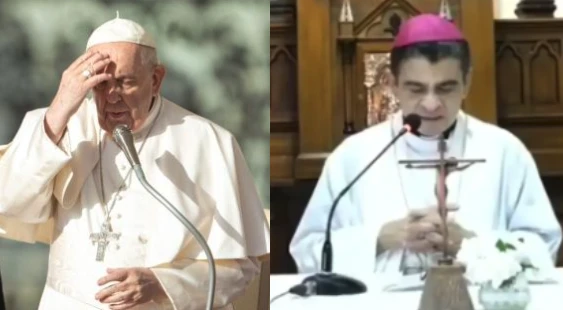
Days before, Pope Francis had harshly criticized Ortega and compared his regime to the crass dictatorships of the early 20th century.
On that same occasion, the Holy Father also deplored the fact that Rolando Álvarez, the bishop of Matagalpa, ended up in prison and described him as a “very serious, very capable man” who “wanted to give his testimony and did not accept exile.”
2. Seizure of Church funds
In its attempt to silence the Church, the Ortega-Murillo dictatorship began to cut off the financial resources of parishes, dioceses, and other Catholic institutions.
The most recent blow was freezing the bank accounts of the Jesuit Central American University (UCA) on Aug. 9 and then expropriating it six days later, on Aug. 15.
(Story continues below)
The strategy of cutting off the Church’s access to its funds was evidenced in May when the bank accounts of several parishes and dioceses including Matagalpa and Managua were frozen. Cardinal Leopoldo Brenes heads the Archdiocese of Managua. The following month the accounts of more parishes and dioceses were frozen.
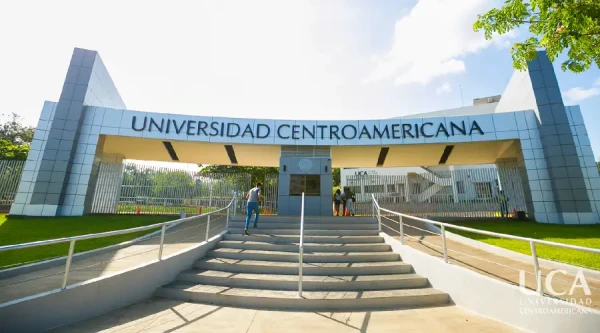
The regime justified its actions by accusing the Church of money laundering and of having carried out the “criminal movement of funds” that supposedly “entered the country illegally.”
As a consequence of bank accounts being frozen, researcher and lawyer Martha Patricia Molina pointed out in July, “elderly priests are not receiving their pensions from the [Church’s] national insurance fund for priests.”
As far as the records show, as early as June 2012 the Sandinista government had taken financial measures against the Church. As reported in 2023 by the Nicaraguan newspaper El Confidencial, that month the authorities withheld more than $500,000 that the humanitarian agency Catholic Relief Services (CRS) had donated to the Diocese of Estelí.
3. Religious congregations expelled
In July 2022, the Sandinista regime forced the Missionaries of Charity to leave Nicaragua after the National Assembly dissolved 101 nongovernmental organizations, including that of Mother Teresa’s sisters and other Catholic institutions.
Later would come the departure of more congregations, such as the Sisters of the Cross of the Sacred Heart of Jesus and the Trappist sisters of Nicaragua. Convents have also been confiscated and foreign women religious expelled.
Religious congregations usually do not indicate the reason for their departure. However, human rights defenders such as Molina point out that they leave the country due to pressure from the regime.
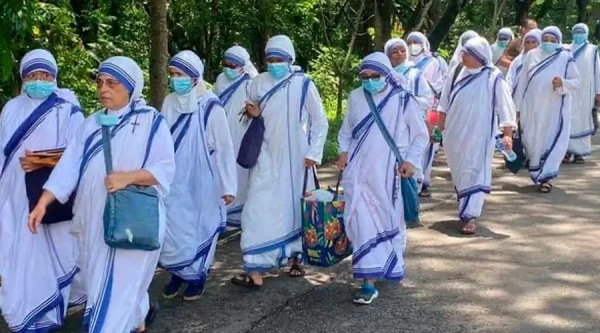
“Between the years 2022 and 2023, 65 women religious have been expelled and six others from different religious congregations have been prohibited from entering, for a total of 71,” Molina reported July 29. The lawyer is the author of the report “Nicaragua: A Persecuted Church?”
According to Molina, 10 religious congregations have been affected. In addition to those mentioned above, the Dominican Sisters of the Annunciation and the Poor Sisters of Jesus Christ of Nicaragua have also been victims of these measures. The other five congregations have not been mentioned for security reasons.
4. Situation of Bishop Álvarez and other priests
Bishop Álvarez of Matagalpa has become the symbol of the persecuted Church. The regime’s police would not allow him to leave the chancery from Aug. 4 to Aug. 19, 2022, when they entered by force in the middle of the night to take him to Managua and hold him under house arrest.
The prelate remained under house arrest until Feb. 10, when he was sentenced to 26 years and four months in prison for “treason.” A day earlier, Álvarez refused to leave the country with 222 other political prisoners who were being deported by the dictatorship to the United States, including four priests, a deacon, and two seminarians.
The sentence was received with great concern by Pope Francis, who dedicated a few words to the imprisoned bishop after the Angelus two days later.
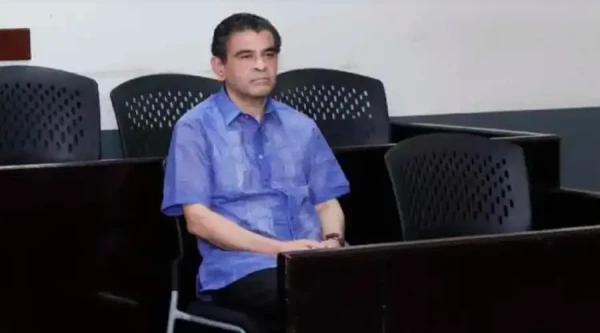
As far as is known, Álvarez is held in La Modelo prison. At the beginning of July there was an attempt to get him released. However, negotiations between the regime and the Church in Nicaragua failed, and the bishop was sent back to prison.
On Aug. 19, one year after the prelate’s violent arrest, the U.S. State Department called for his immediate release.
The Inter-American Commission on Human Rights (IACHR) and the Office of the United Nations High Commissioner for Human Rights for Central America and the English Caribbean (OHCHR) condemned “the continuing violations of his human rights, such as the lack of access to medical care and essential medicines, the solitary confinement he has been subjected to since his detention at La Modelo prison, and the limited family visits that he has been allowed.”
According to Molina’s report on the persecuted Church, since the 2018 crisis began, there have been 193 attacks against bishops, priests, deacons, seminarians, and women religious. These include constant surveillance, threats, attempted murders, beatings, criminal proceedings, and exile.
The report, updated to March of this year, states that a bishop (Silvio Báez), 13 priests, and two deacons have been forced into exile. In addition, the apostolic nuncio and two priests were expelled, while five priests, a deacon, and two seminarians were exiled.
5. Freedom of worship: Can Catholics still go to Mass in Nicaragua?
Given this panorama, the question arises as to whether the faithful can continue to worship freely in Nicaragua.
In an Aug. 22 statement to ACI Prensa, CNA’s Spanish-language news partner, Molina explained that “the parishes are under surveillance 24 hours a day by infiltrators who generally belong to the Council of Citizen Power, which is a group of people in charge of monitoring opponents and including them on a list,” which is then handed over to the police.
In addition, the priests Tomás Sergio Zamora Calderón and William Mora were prohibited by the regime from returning to Nicaragua after having participated in World Youth Day in Lisbon, Portugal, in early August.
In this sense, Molina explained, Catholics can participate in Masses and celebrate sacraments such as baptisms and marriages, “but they are always monitored.”
“In fact, the homilies of the priests are always recorded and sent to what is known as El Carmen, which is the place where the dictatorial couple Ortega-Murillo lives” and where the sermons of the parish priests are analyzed.
Regarding processions, she noted that for Holy Week 2023 “more than 3,176 processions were prohibited” in the streets. This meant that these expressions of faith had to be held inside the churches.
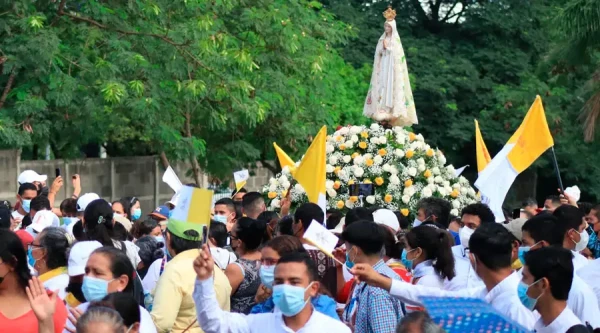
Although there were reactions from the faithful, as in the procession of the Virgin of Mercy in 2022, the reality is that the regime uses its available means to prevent them.
Molina explained that the prohibition of holding processions in the streets had already been given before the Holy Week 2023 and also after it. Although there were some exceptions, “such as the celebration of St. Dominic that takes place in Managua,” this was due to the fact that it is a very heavily attended festival where people also go to drink liquor and have fun.
“So, for tourism reasons, that procession was allowed, but the rest of them are being prohibited,” she said.
The Nicaraguan researcher also noted that the officials try not to notify the prohibitions in writing but do so through “courtesy visits” in which they verbally inform the parish priests that “they cannot hold the processions.”
“It has also been forbidden to mention Bishop Rolando Álvarez in Masses and in prayers,” Molina said. She reported that lay groups, priests, and seminarians secretly pray for the bishop, “because whoever mentions him in the homily, at Mass ... is immediately visited by the police” and may even be arrested.
6. Official pronouncements of the Nicaraguan bishops
The Nicaraguan Bishops’ Conference is notable for its concern for national life and on several occasions, it has released statements on elections or other events of public interest.
However, when their position has not been to the liking of the regime, the dictatorship has responded with accusations and verbal attacks.
Despite this situation, the Church reiterated in November 2021 its offer to mediate between the opposition and the regime in order to resolve the political crisis, but Ortega rejected it.
Regarding Álvarez’s situation, the bishops issued a statement Aug. 20, 2022, the day after he was forcibly removed from the diocesan chancery in Matagalpa, stating that they were “deeply pained” by “this wound” suffered by the Church in Nicaragua.
The ACN Report
On June 22, the pontifical foundation Aid to the Church in Need (ACN) presented its 2023 Report on Religious Freedom in which it noted that the persecution of the Church in Nicaragua “has a political and not religious motivation.”
This is because since 2018, when the current crisis broke out, “the Church has openly criticized any repression of civil liberties and the violation of human rights in the country.”
The ACN report on Nicaragua indicates that religious freedom in the Central American country “has visibly worsened.”
“The prospects for human rights, including religious freedom, are deeply troubling and negative,” the report concludes.
This story was first published by ACI Prensa, CNA’s Spanish-language news partner. It has been translated and adapted by CNA.






